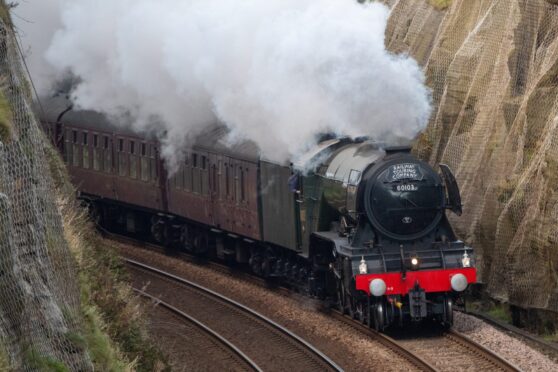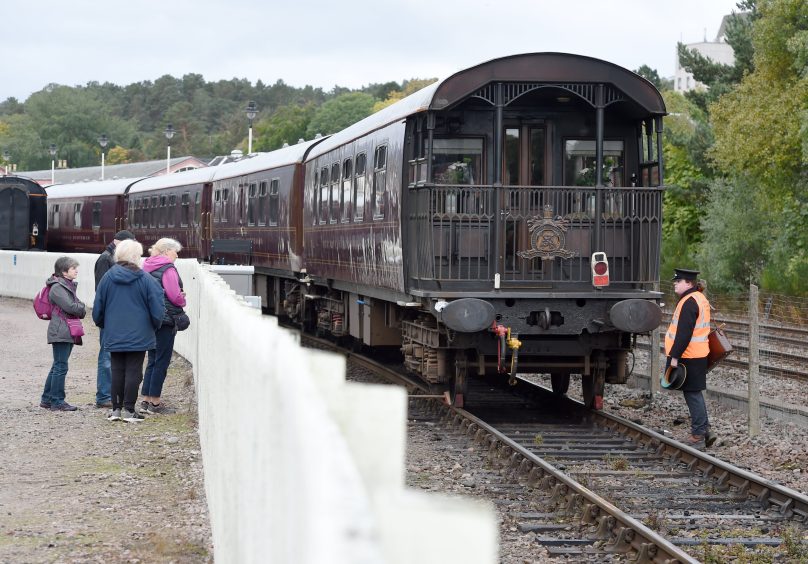Carriages pulled by the iconic Flying Scotsman may have to be withdrawn, changing forever the “authentic” experience of the age of steam.
Iconic “slamming door” carriages pulled by the Flying Scotsman engine will no longer be able to operate on the rail network unless a judicial review is found in favour of operator West Coast Railways (WCR).
The train carriages will start “disappearing” from the mainline, as early as next year.
As one of the world’s most celebrated trains The Flying Scotsman regularly draws large crowds when it visits the north and north-east of Scotland.
But a rule for a mechanised central door locking (CDL) may see heritage trains across the UK hit the buffers.
Until now, an exemption has been in place for WCR.
But now a “modern interpretation” of Railway Safety Regulations 1999 by the Office of Road and Rail (ORR) to fit central door locking to historic railway coaches could mean the UK’s most famous and popular steam trains are never seen on the mainline again.
It has been estimated that if WCR’s exemption to operate on the main line is revoked
permanently this would lead to £50 million in lost economic value to local and
national communities.
Yesterday we shared fears for the “Hogwarts Express”, which brings around £20million to the Highland economy.
‘Slam door’ carriages on the Flying Scotsman may no longer be available
The ORR believes that someone would be injured because the doors do not have a central locking system and because windows pull down allowing people to lean out.
The original doors on the train are deemed “unsafe”.
Since 2003, the UK’s most well-known heritage steam trains have been allowed to run passenger services on the main line with an alternative locking system to CDL, through exemptions granted by the ORR.
But earlier this year WCR was told the exemption has come to an end.
The cost of updating the doors with the central locking system will cost upwards of £7 million.
The cost is equivalent to almost 10 years of profit for WCR.
Last week a judicial review of the rule was heard in court, in a case brought by WCR.
WCR is now waiting for a determination following the review.
James Shuttleworth, commercial manager, at WCR, said: “This country was the birthplace of railways and I very much hope it won’t be the death of our steam power on the main line.
‘We still need our most famous trains to run on the real railway’
“Specialist railways are one thing, but to truly experience the beauty and power of steam we still need our most famous trains to run on the real railway.
“Not only does this protect the heritage nature of the carriages on trains such as the iconic special vehicles hauled by The Flying Scotsman, but it has also been allowed because they have traditional and robust safety procedures in place to protect passengers,” he added.
“In WCR’s case, trained stewards are responsible for four doors at the end of each
carriage, they bolt the doors through secondary door locks (SDL) and monitor them
throughout the journey.”
In court, WCR made the case that it had been granted an exemption from using
CDL since 2005 and has been operating safely since.
“The installation of central door locking would also irreversibly alter 100-year-old
locomotives,” Mr Shuttleworth continued.


